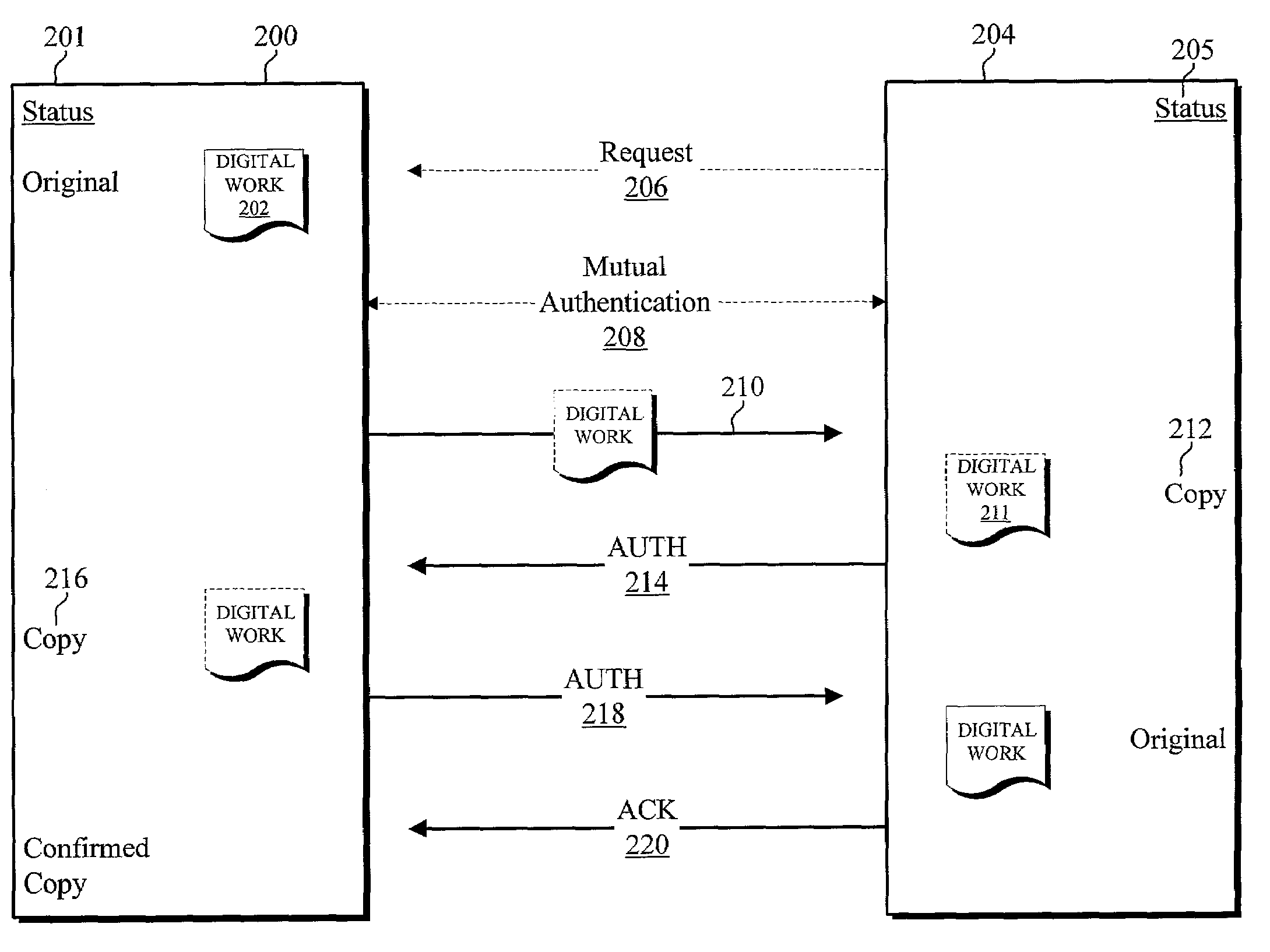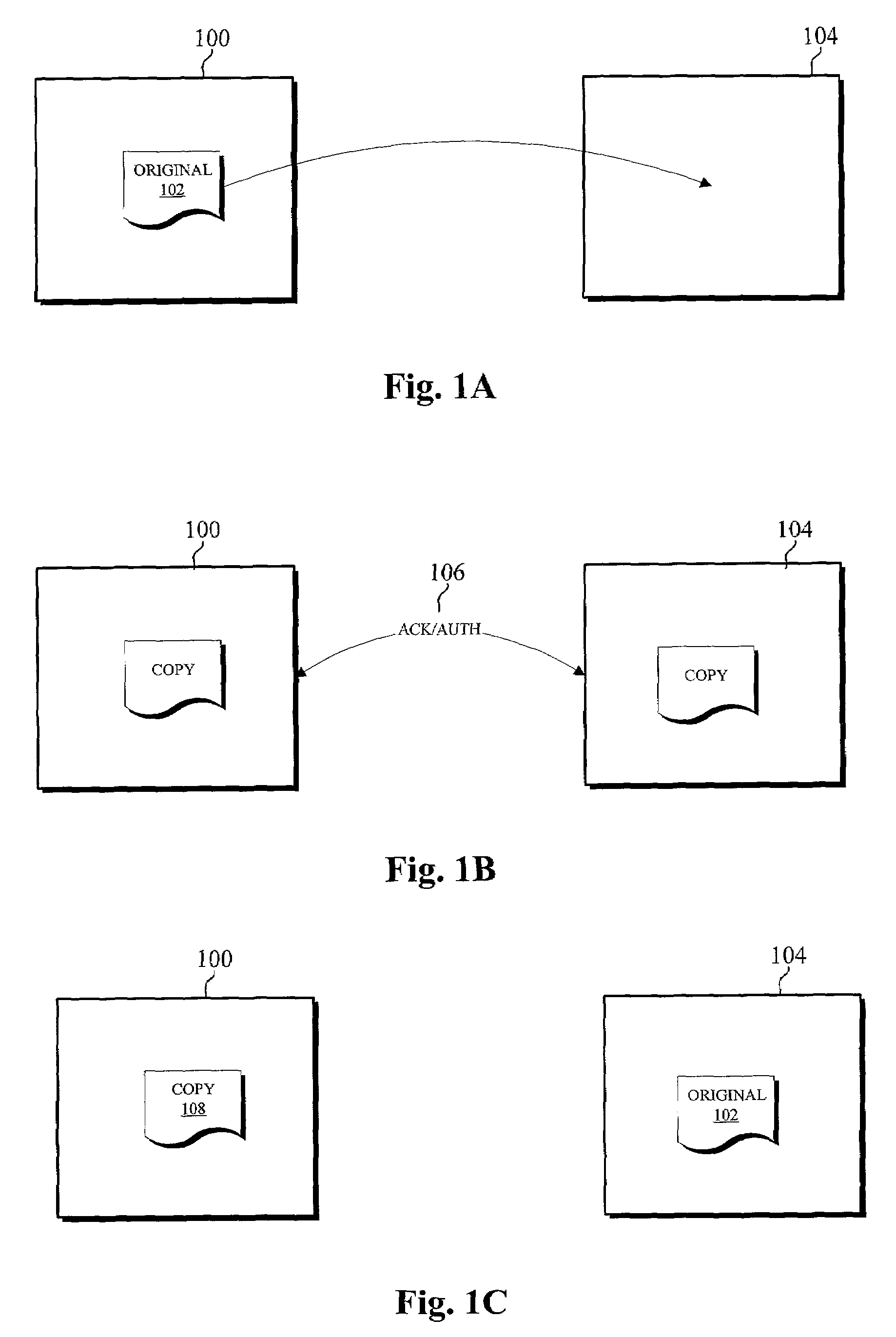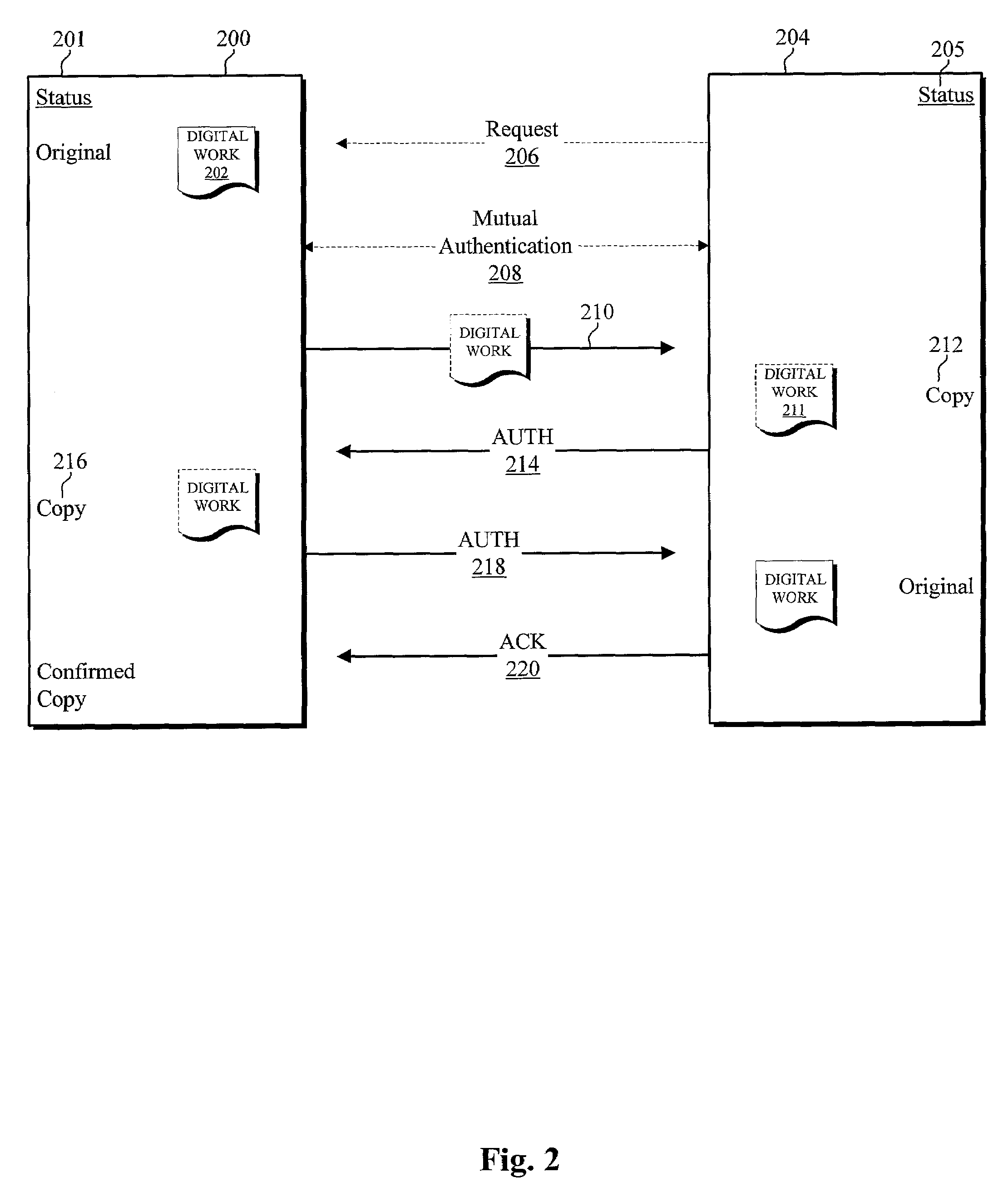System and methods for managing the distribution of electronic content
- Summary
- Abstract
- Description
- Claims
- Application Information
AI Technical Summary
Benefits of technology
Problems solved by technology
Method used
Image
Examples
embodiment
[0820]B.5.1 Device Manufacturers (Alternate Embodiment)
[0821]The main roles of the Device manufactures are to deploy devices and act as a trusted link for them. In order to full-fill these roles they control several principals:[0822]Device Manufacturer principal:Root delegates to it the operations that will be performed by the devices.[0823]To-Root principal(s):Devices trust it unconditionally and forever. It is used to designate which Root the devices should trust and for how long. In order to minimize the damage produced by the compromise of this principal, a given Device Manufacturer can create and control as many To Root principals as it may desire. However, to minimize the overhead, a given device only trusts one of the To Root principals.
[0824]The Device Manufacturer delegates to the Devices through a given Renovator D the following operations (by means of K-of N (K=1) certificate):[0825]receive-content:Evaluated by the Content Providers and other Devices.[0826]move-content:Ev...
PUM
 Login to View More
Login to View More Abstract
Description
Claims
Application Information
 Login to View More
Login to View More - R&D
- Intellectual Property
- Life Sciences
- Materials
- Tech Scout
- Unparalleled Data Quality
- Higher Quality Content
- 60% Fewer Hallucinations
Browse by: Latest US Patents, China's latest patents, Technical Efficacy Thesaurus, Application Domain, Technology Topic, Popular Technical Reports.
© 2025 PatSnap. All rights reserved.Legal|Privacy policy|Modern Slavery Act Transparency Statement|Sitemap|About US| Contact US: help@patsnap.com



